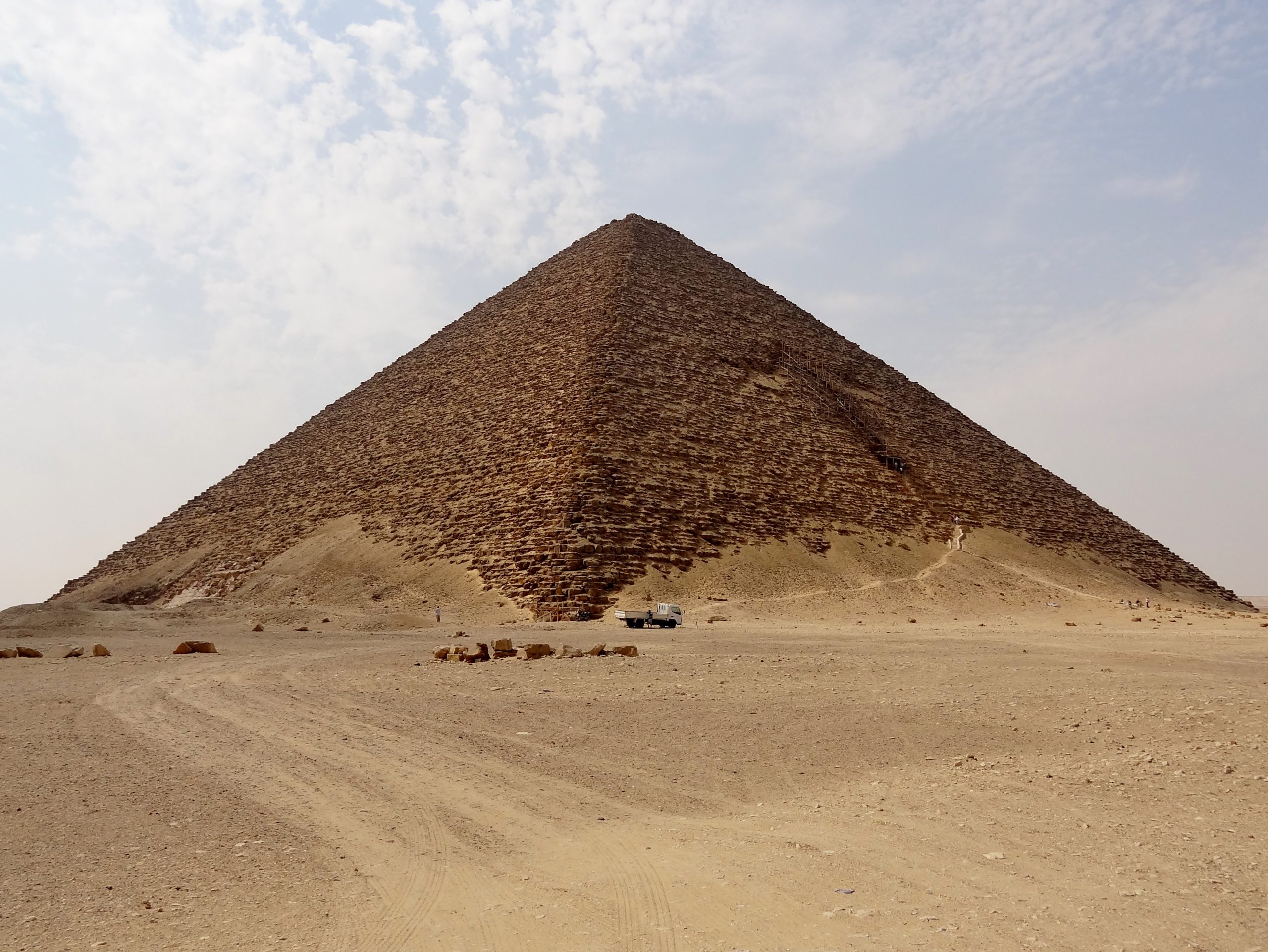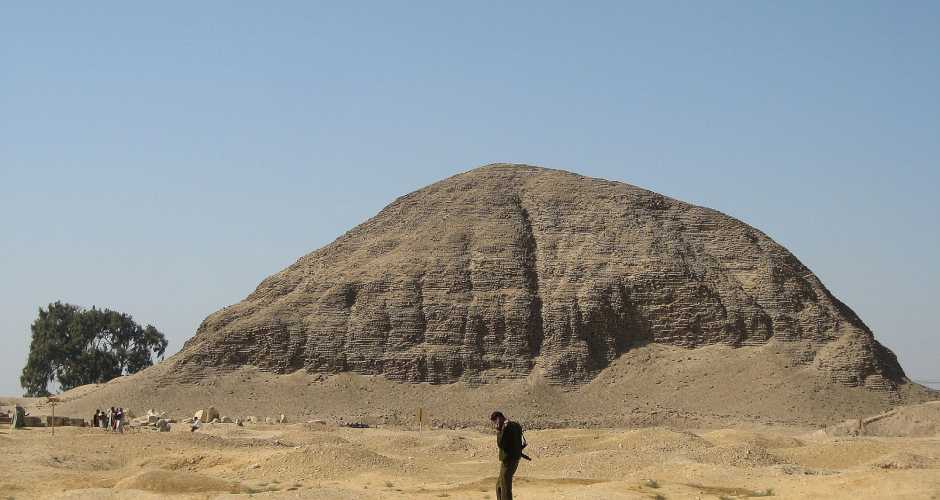When we think of Egypt, the image of the Giza Pyramids—the majestic trio of Khufu, Khafre, and Menkaure—immediately comes to mind. These iconic structures have long been symbols of ancient Egypt’s grandeur. However, Egypt is home to a wealth of other pyramids that often go unnoticed by tourists and even historians despite their significance. From older pyramids that predate the Giza structures to smaller, lesser-known ones with unique designs, these ancient tombs offer a deeper insight into the architectural evolution of one of the world’s oldest civilizations.
This guide will take you on a journey to explore the must-see Egyptian pyramids beyond the famous Giza plateau. Although these pyramids may not have the same global recognition, they hold equal intrigue and mystery, offering a more intimate glimpse into ancient Egypt’s funerary traditions and the architectural innovations that paved the way for the wonders of Giza.
Table of Contents
ToggleThe Step Pyramid of Djoser
Overview:
One of Egypt’s most historically significant pyramids, the Step Pyramid of Djoser, stands proudly in Saqqara, a vast burial ground near Cairo. Dating back to the 27th century BCE, this pyramid is considered the first large-scale stone construction in history and is a testament to the ingenuity of ancient Egyptian architects. It was designed by the legendary architect Imhotep, who is credited with pioneering pyramid construction in Egypt.
Why It’s Significant:
Unlike the smooth-sided pyramids of Giza, the Step Pyramid features a unique, terraced design. It began as a traditional mastaba (an early type of flat-roofed tomb) but was expanded into a six-layered, step-like structure. This design was revolutionary at the time, transitioning from flat tombs to the towering pyramids we recognize today.
What to See:
Visitors to Saqqara can explore the pyramid complex, which includes courtyards, temples, and other ancient structures that have been remarkably well-preserved. The Step Pyramid itself was recently restored, and it’s now open to visitors, providing a fascinating glimpse into the early stages of pyramid construction.
The Bent Pyramid of Sneferu
Overview:
Moving from Saqqara to Dahshur, we encounter another fascinating structure—the Bent Pyramid. Built by Pharaoh Sneferu (the father of Khufu), this pyramid is one of the most peculiar in Egypt due to its unusual shape. Standing at 105 meters tall, the Bent Pyramid was an early attempt at constructing a smooth-sided pyramid, but an engineering miscalculation caused its unique, bent appearance.
Why It’s Significant:
The Bent Pyramid is significant because it marks an important transitional phase in pyramid construction. It represents a learning curve for ancient architects as they shifted from stepped pyramids to the smooth-sided ones seen at Giza. The pyramid starts at a steep angle but then shifts to a more gradual slope about halfway up, giving it its distinctive “bent” look.
What to See:
The Bent Pyramid is one of the few pyramids that retains much of its original limestone casing, offering a rare chance to see how the pyramids once looked in antiquity. The nearby Red Pyramid, also built by Sneferu, offers a more refined example of the smooth-sided design, making Dahshur a must-visit for anyone interested in the evolution of pyramid architecture.
The Red Pyramid of Sneferu

Overview:
Not far from the Bent Pyramid is the Red Pyramid, also constructed by Sneferu. It stands as the first successful attempt at building a true, smooth-sided pyramid. It is named for the reddish hue of the limestone used in its construction and is often overshadowed by the nearby Bent Pyramid. However, the Red Pyramid holds a unique place in history, marking a turning point in ancient Egyptian pyramid design.
Why It’s Significant:
At 104 meters tall, the Red Pyramid is the third largest in Egypt, after the Great Pyramid of Giza and the Pyramid of Khafre. It represents the culmination of Sneferu’s architectural experiments and is considered one of the best-preserved pyramids in Egypt. Its smooth, clean lines starkly contrast the Bent Pyramid’s experimental design, showcasing the ancient Egyptians’ improved understanding of pyramid construction.
What to See:
Visitors to the Red Pyramid can explore its internal chambers. The passageways inside are narrow and steep, leading to the burial chamber, which, while empty, still gives a sense of the grandeur intended for the pharaoh. The view from the top of the Red Pyramid also offers panoramic vistas of the surrounding desert landscape.
The Pyramid of Unas
Overview:
Back in Saqqara, you’ll find the Pyramid of Unas, a small yet historically significant structure dating to the 5th Dynasty. Although not as grand as some of the other pyramids on this list, the Pyramid of Unas holds an essential place in Egyptian history due to the discovery of the Pyramid Texts—the earliest known religious texts inscribed on the walls of the pyramid’s burial chamber.
Why It’s Significant:
The Pyramid Texts found inside Unas’ pyramid were the first of their kind, representing the earliest form of written Egyptian funerary rites. These inscriptions offer a wealth of information about the ancient Egyptians’ beliefs regarding the afterlife, including spells and prayers intended to protect the pharaoh’s soul on its journey to the next world. These texts laid the groundwork for the later Coffin Texts and the famous Book of the Dead.
What to See:
While the exterior of the Pyramid of Unas is relatively plain and modest, its true significance lies in its interior. Visitors can descend into the burial chamber and view the hieroglyphic inscriptions that adorn the walls, providing a rare glimpse into the religious practices of ancient Egypt.
The Pyramid of Teti
Overview:
Another noteworthy pyramid in Saqqara is the Pyramid of Teti, the first pharaoh of Egypt’s 6th Dynasty. Although its appearance is more eroded than some of the other pyramids on this list, Teti’s pyramid is an important site for anyone interested in Egyptian history, particularly because of the intricate pyramid texts and the rich funerary complex surrounding it.
Why It’s Significant:
Like the Pyramid of Unas, the Pyramid of Teti contains Pyramid Texts on its interior walls. However, what makes this pyramid particularly interesting is its surrounding necropolis, home to several elaborately decorated tombs belonging to officials and nobles from Teti’s court. These tombs offer an extraordinary insight into the art and culture of Egypt during this period.
What to See:
Visitors to the Pyramid of Teti can explore the tomb of Mereruka, one of the most elaborate tombs in Saqqara. The vivid reliefs and paintings inside Mereruka’s tomb depict scenes of daily life in ancient Egypt, offering a rare and intimate glimpse into the culture and customs of the time.
The Pyramid of Amenemhat I
Overview:
Heading south, we arrive at Lisht, a necropolis between Cairo and Fayoum. The most prominent structure here is the Pyramid of Amenemhat I, founder of the 12th Dynasty. Although not as well-preserved as the pyramids of Giza or Dahshur, the Pyramid of Amenemhat I is historically significant for marking the beginning of the Middle Kingdom, a period of great cultural and political resurgence in ancient Egypt.
Why It’s Significant:
The Pyramid of Amenemhat I was part of a larger pyramid complex that included mortuary temples and smaller pyramids for the pharaoh’s family members. It reflects the Middle Kingdom’s renewed focus on monumental architecture, though the craftsmanship of the pyramid’s construction is not as refined as in earlier periods.
What to See:
The pyramid is in a state of ruin, but the surrounding necropolis and nobles’ tombs are worth exploring. The tombs contain beautifully carved reliefs and inscriptions that shed light on the lives of the people who served under Amenemhat I.
The Pyramid of Senusret II at Lahun
Overview:
The Pyramid of Senusret II, located in Lahun, is another notable Middle Kingdom pyramid. This pyramid differs from earlier structures in that it was constructed using a mudbrick core rather than stone, leading to its rapid deterioration over the millennia. However, it remains an important site for understanding the architectural innovations of the Middle Kingdom.
Why It’s Significant:
The Lahun Pyramid is one of the earliest examples of mudbrick being used as a primary building material for a pyramid’s core. Additionally, the pyramid complex at Lahun included workers’ villages, which provided valuable insights into the lives of the laborers who constructed these monumental structures.
What to See:
While the pyramid is heavily eroded, the workers’ village and surrounding tombs are of great archaeological interest. Excavations in the area have uncovered numerous artifacts, including jewelry and pottery, giving us a glimpse into the daily lives of ancient Egyptians during the Middle Kingdom.
The Black Pyramid of Amenemhat III
Overview:
Located in Dahshur, the Black Pyramid of Amenemhat III is another notable Middle Kingdom structure. Named for the dark hue of its mudbrick core, this pyramid was an ambitious project that, unfortunately, encountered structural problems due to the materials used. Despite this, it is a fascinating example of the Middle Kingdom’s pyramid-building efforts, reflecting its innovation and challenges.
Why It’s Significant:
The Black Pyramid was originally encased in limestone, but over time, much of the outer casing was stripped away, exposing the darker core. Archaeologists discovered a complex network of burial chambers and passages inside the pyramid, indicating that it was designed to serve as a tomb for Amenemhat III and his family. However, due to structural instability, the pharaoh eventually chose to be buried in his second pyramid at Hawara.
What to See:
Although the Black Pyramid is not as visually impressive as others, its historical significance and unique design make it worth a visit. The surrounding area, particularly the nearby tombs and ruins, offers further insights into the funerary practices and architectural challenges of the Middle Kingdom.
The Pyramid of Hawara

Overview:
The second pyramid of Amenemhat III is located at Hawara, near Fayoum. This pyramid was built later in the pharaoh’s reign after issues with the Black Pyramid became apparent. The Pyramid of Hawara is particularly known for the Labyrinth, a massive mortuary complex that once stood adjacent to the pyramid and was described by ancient historians like Herodotus as one of the wonders of Egypt.
Why It’s Significant:
The Pyramid of Hawara marks the final stages of pyramid construction in Egypt’s Middle Kingdom. Although much of the pyramid and the Labyrinth have been lost to time, the site is significant for its advanced design and the discovery of the pharaoh’s burial chamber deep within the pyramid. The Labyrinth was once a vast complex with hundreds of rooms and winding passageways designed to protect the pharaoh’s tomb from looters.
What to See:
While the Labyrinth no longer exists in its full glory, archaeologists continue to uncover parts of the complex. The remains of the pyramid itself can be explored, along with the nearby tombs and archaeological finds that provide a glimpse into life during Amenemhat III’s reign.
Conclusion
Egypt’s pyramids extend far beyond the famous Giza plateau. These lesser-known pyramids, scattered across the country, offer a deeper understanding of the evolution of pyramid construction, the religious beliefs of ancient Egyptians, and the lives of the people who built and were buried in them. From the innovative designs of the Step Pyramid of Djoser and the Bent Pyramid to the richly adorned tombs of Saqqara, Egypt’s pyramid sites provide a fascinating journey through the history of one of the world’s most remarkable civilizations.
Exploring these pyramids allows you to step back in time and witness ancient Egypt’s architectural feats and cultural richness, ensuring a more comprehensive and enriching experience for history enthusiasts and curious travelers.
